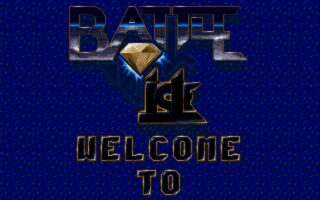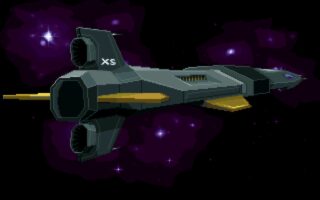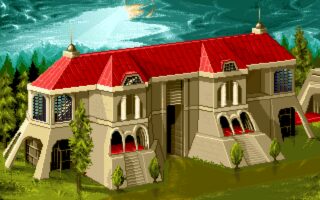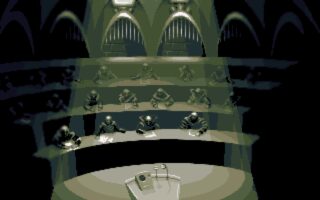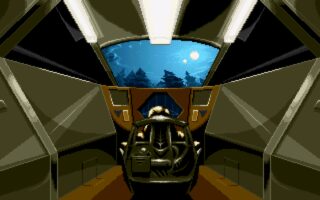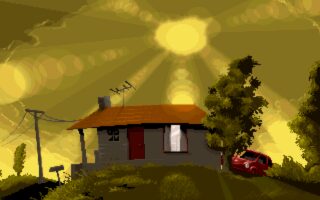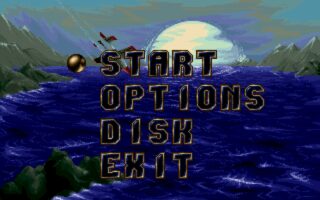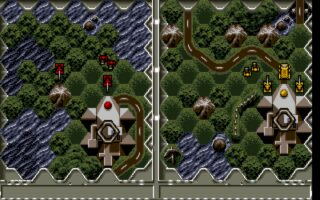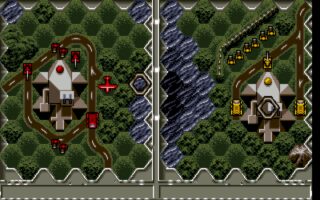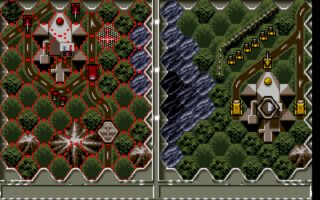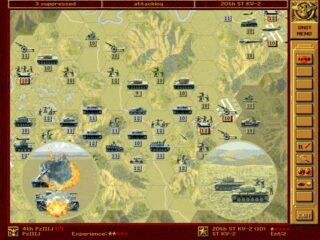Battle Isle is the first game of the popular series of sci-fi turn-based war games developed by Blue Byte Software. This first title was released in 1991 for the Amiga and MS-DOS, and it included 16 levels to play against the computer and another 16 for 2 players.
This hex-based tactical warfare game, designed by Thomas Hertzler and Lothar Schmitt, established Blue Byte as a major force in strategic gaming, combining complex military simulation with accessible gameplay mechanics.
The game presents players with a futuristic military conflict on the island of Chromos, where two factions battle for control using a vast array of land, sea, and air units. The hex-based movement system allows for precise tactical positioning, while the simultaneous turn resolution creates tension as players must anticipate enemy movements without knowing their exact plans. Each unit type has specific strengths, weaknesses, and movement capabilities, from basic infantry and tanks to advanced aircraft and naval vessels. The fuel and ammunition system adds strategic depth, requiring players to manage supply lines and plan attacks carefully rather than simply rushing forward with superior numbers.
One of Battle Isle's most innovative features was its split-screen two-player mode, allowing both players to plan their moves simultaneously on the same computer without seeing each other's orders. This groundbreaking implementation eliminated the traditional problem of players watching over each other's shoulders during turn-based strategy games, maintaining the fog of war and strategic surprise that made the simultaneous turn system so compelling. The split-screen interface divided the monitor horizontally, giving each player their own view of the battlefield while preserving the secrecy of their tactical decisions.
The MS-DOS version showcased detailed VGA graphics with crisp unit sprites and clear terrain representation that made battlefield analysis straightforward. The interface, while initially complex, proved intuitive once mastered, allowing players to issue movement orders, coordinate attacks, and manage multiple units efficiently. Sound effects were minimal but effective, with satisfying weapon sounds and explosions that enhanced the tactical atmosphere. The AI opponent provided reasonable challenge, though experienced players could exploit certain patterns in enemy behavior.
The Amiga version maintained the core gameplay while adapting to the platform's different capabilities. The graphics remained sharp and colorful, taking advantage of the Amiga's palette to create visually appealing battlefields. However, the Amiga port suffered from slower performance during complex turns with many units, and the mouse-driven interface occasionally felt less responsive than the DOS version. The sound design benefited from the Amiga's superior audio capabilities, with improved weapon effects and atmospheric background sounds.
Battle Isle's success led Blue Byte to develop several other notable war games that expanded on similar themes and mechanics. The immediate sequel Battle Isle 2 refined the formula with improved graphics, expanded unit variety, and enhanced campaign structure while maintaining the innovative simultaneous turn system. Battle Isle: The Andosia War served as a prequel, exploring the backstory of the conflict with similar tactical mechanics but different scenarios and factions. History Line: 1914-1918 transported the hex-based tactical system to World War I, featuring historical units and scenarios while maintaining the simultaneous turn structure. The company also produced The Settlers, representing a departure into real-time strategy with city-building elements though retaining Blue Byte's attention to economic and logistical details.
The game's influence extended beyond Blue Byte's own catalog, inspiring other developers to explore simultaneous turn-based mechanics and complex supply management systems. Players familiar with Panzer General would find similar attention to unit statistics and terrain effects, while the hex-based movement system shared DNA with classic board games like Squad Leader, bringing tabletop tactical depth to computer gaming.
Battle Isle established many conventions that would become standard in tactical strategy games, including the importance of combined arms tactics, terrain advantages, and logistical planning. The simultaneous turn system created unique psychological elements, as players had to second-guess opponent intentions while committing to their own strategies, adding a layer of mental gameplay rarely seen in traditional turn-based games. The split-screen multiplayer implementation became a template for other strategy games seeking to solve the problem of maintaining secrecy in local multiplayer matches.

